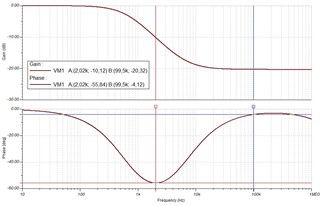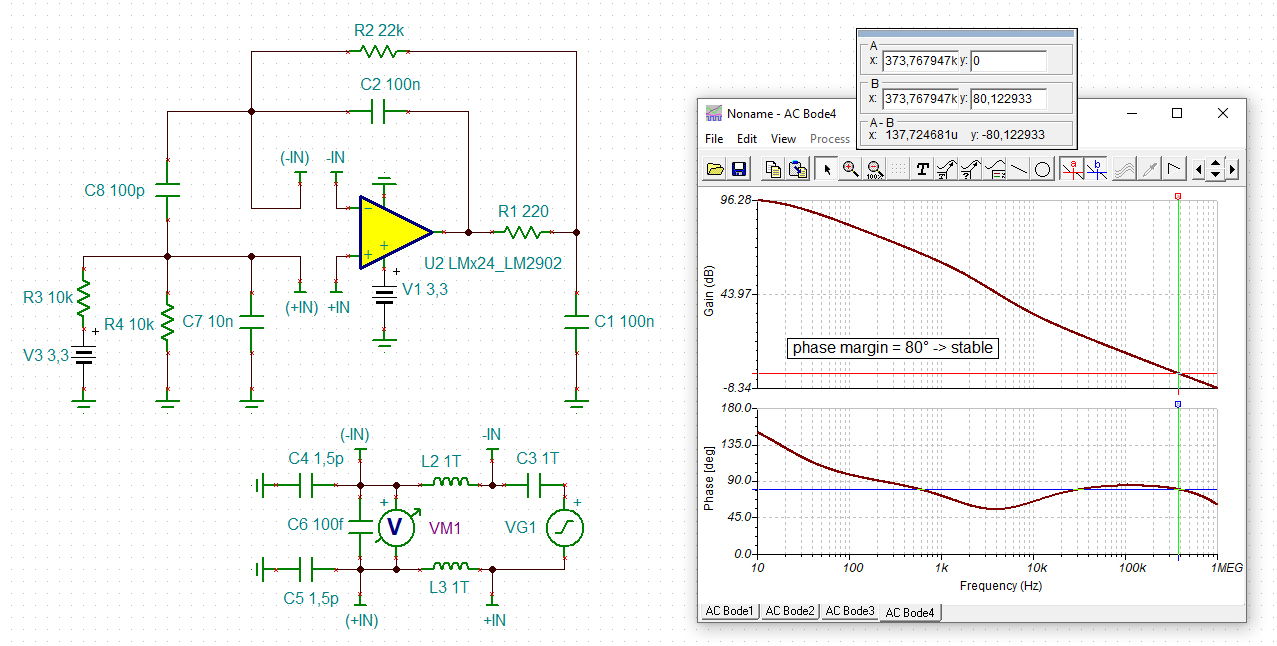Other Parts Discussed in Thread: TINA-TI
Hi all,
I'm referring to following thread:
about LM324 stability and in particular to the last post where a numerical simulation was done by means of TINA-TI.
I've did same simulation using same source circuit file here below my result:

into the post was written "With the given components this results in a phase margin of 34° at 2kHz and 86° at 100kHz", how to see it into the above diagram?
Thanks


